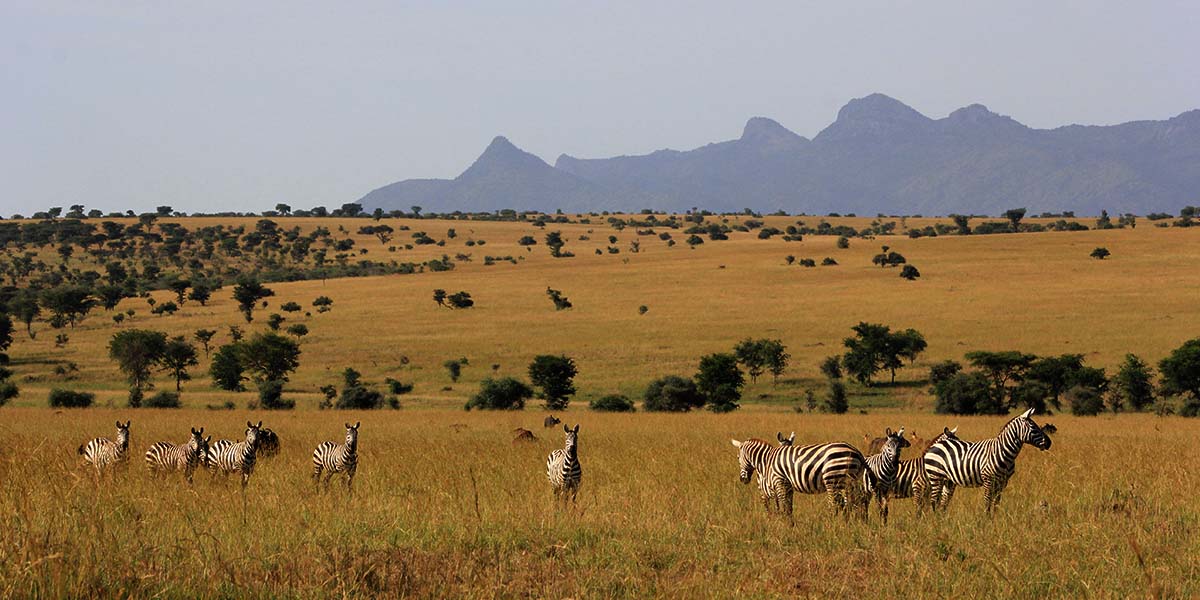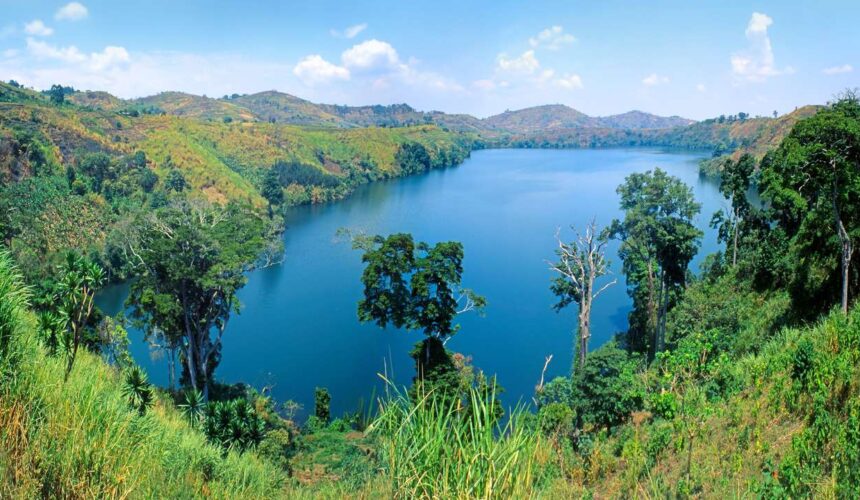Lake Mburo National Park stands as one of Uganda’s most accessible and enchanting wildlife destinations. Nestled in the heart of Western Uganda—with its sweeping savannahs, shimmering lakes, and abundant biodiversity—this park offers a blend of adventure and tranquility that appeals to families, seasoned safari enthusiasts, and eco-tourists alike.

Location, Geography, and Unique Landscapes
Situated in Nyabushozi County of Kiruhura District, Lake Mburo National Park is only about 30 km east of Mbarara and roughly 240 km west of Kampala. Its strategic location makes it the closest savannah safari park to the Ugandan capital. Travelers on route from Kampala to other western safari circuits often choose to break up the journey with an overnight stay or a day trip in this peaceful wilderness 3.
Covering an area of approximately 260–370 square kilometers, Lake Mburo National Park is remarkable for its diverse and tightly interwoven habitats. A mosaic of open grassland, acacia woodlands, bushland, and wetlands defines the park’s landscape. About 20 percent of the park consists of vital wetland ecosystems, making it a haven for an array of water and bird species. The park’s defining feature—a series of lakes that beautifully punctuate the savannah—offers the perfect backdrop for boat cruises and canoeing adventures, where visitors may catch a glimpse of hippos and crocodiles amid serene waters.
A Walk Through History and Cultural Heritage
The origins of Lake Mburo trace back to when it was initially gazetted in 1933 as a controlled hunting area. In 1963, it was upgraded to a game reserve, and finally, in 1983, it gained official national park status. This evolution reflects both the region’s rich natural resources and its complex history. The area has long been home to the Banyankole Bahima pastoralists, whose cattle-herding traditions have shaped the land. While the creation of the park led to conflicts over grazing rights and resettlement, these historical chapters now add a layer of cultural significance to every visit. Today, local communities are increasingly involved in tourism activities, offering cultural tours that deepen visitors’ appreciation of Ugandan heritage 4.
Abundant Wildlife: A Safari Adventure Awaits
Lake Mburo National Park is an ecological jewel, renowned for its impressive variety of wildlife. Often described as the “land of antelopes, zebras, and hippos,” the park provides ample opportunities for wildlife viewing on game drives through scenic, sunlit grasslands and along the water’s edge.
Some of the most compelling wildlife highlights include:
- Impalas and Zebras: Lake Mburo is famed for being the only national park in Uganda that is an impala haven. In addition, a small but striking population of zebras roams the open fields, making every safari drive a delightful visual experience.
- Hippos and Crocodiles: The park’s lakes are alive with aquatic life. A boat cruise over Lake Mburo or one of the smaller water bodies often reveals hippos submerged in the calm waters alongside the occasional glimpse of a lurking crocodile.
- Birdlife and Raptors: With over 300 bird species recorded, the park is a paradise for bird watchers. From the elegant African finfoot to a dazzling array of water birds and raptors, every moment is an opportunity to marvel at nature’s palette.
- Rare Encounters: In recent years, efforts to reintroduce species such as Rothschild’s giraffe have paid off, adding a new dimension to wildlife viewing in the park. Though lions and leopards once roamed freely, they are now mostly absent, allowing smaller predators and a variety of antelope species to thrive undisturbed .
Exciting Safari Activities and Tourist Experiences
Lake Mburo National Park is much more than a wildlife reserve—it is a full-fledged safari destination with a diverse range of activities tailored to adventurous travelers:
- Game Drives: The main attraction for many visitors is the immersive game drive experience. Whether you’re taking a guided tour or exploring independently, venturing along the park’s dusty trails offers up-close encounters with antelopes, zebras, and other savannah dwellers.
- Boat Cruises and Canoeing: Getting on the water is a unique way to appreciate the park’s aquatic ecosystems. Boat rides let you witness hippos and crocodiles in action, while the quiet ambiance of canoeing presents an intimate way to enjoy the wetlands.
- Bird Watching and Nature Walks: The park’s rich avifauna invites avid bird watchers to set out on early-morning excursions. Guided nature walks also reveal the smaller, often-overlooked aspects of the park’s biodiversity, from delicate wildflowers to the soft footsteps of elusive mammals.
- Cultural and Community Tours: Beyond the wildlife, visitors are encouraged to explore the cultural tapestry of the region. Tours that highlight traditional practices and historical landmarks provide context to the park’s transformation and the enduring legacy of the local communities 4.
Eco-Tourism and Conservation Efforts
At the heart of Lake Mburo National Park is a strong commitment to conservation and sustainable tourism. Managed by the Ugandan Wildlife Authority, the park is a model for balancing tourism with environmental stewardship. Eco-friendly initiatives focus on preserving the delicate ecosystems—from implementing water conservation strategies in the wetlands to engaging local communities in sustainable practices.
Visitors who choose to explore Lake Mburo are not only treated to exceptional wildlife encounters but also contribute to continuing conservation efforts. This commitment has helped maintain the park’s status as a key destination for eco-tourists, who value responsible travel practices and the opportunity to support nature preservation in one of Africa’s most dynamic environments 4.
Tips for a Memorable Safari Experience
To ensure that your journey to Lake Mburo National Park is as rewarding as possible, consider these traveler tips:
- Best Time to Visit: The dry months typically offer excellent wildlife viewing opportunities, as animals gather around water sources. However, the rainy season brings a lush vibrancy to the landscapes along with quieter trails for nature walks.
- Entry Points and Directions: The park has two main gates, the Sanga gate (accessed from the Kampala side) and the Nshara gate (approachable from Mbarara). Signposted routes along Lyantonde make it easy for travelers to navigate from Kampala.
- Local Safari Operators: Working with experienced local tour operators can greatly enhance your safari experience. They can help arrange everything from comfortable accommodations to guided excursions that highlight the best of Lake Mburo’s flora and fauna.
- Packing Essentials: For a safari, it’s best to pack lightweight, neutral-colored clothing, a good pair of binoculars, sunscreen, insect repellent, and a camera to capture the unforgettable sights.
- Cultural Sensitivity: Engaging with local communities is a wonderful way to enrich your experience. Be respectful of local customs and traditions, and consider participating in community-led tours to gain insights into the region’s history and cultural heritage 3.
A Call to Adventure: Embarking on Your Safari Journey
Lake Mburo National Park is a destination that captivates with diversity and character. Its blend of scenic beauty, rich history, abundant wildlife, and immersive safari activities makes it a true hidden gem in Uganda’s national park circuit. Whether you’re seeking adrenaline-pumping game drives, serene boat rides, or insightful cultural tours, Lake Mburo promises an experience that lingers long after your visit 4.
By choosing to explore Lake Mburo, you’re not just taking a trip—you’re stepping into a vibrant narrative of conservation, history, and natural wonder. This unique park invites you to engage with nature in a truly authentic way; you’ll leave with cherished memories, a deeper understanding of Uganda’s ecological treasures, and perhaps a newfound passion for sustainable travel.
Additional Insights:
If you’re passionate about safari adventures and wildlife conservation, keep an eye out for seasonal festivals and local community events hosted near the park. Such events provide extra opportunities to experience Uganda’s rich cultural heritage firsthand. Moreover, eco-tourism initiatives continue to evolve in the region, offering travelers innovative ways to connect with nature—think guided photography tours at dawn, specialized bird-watching sessions led by regional experts, or even conservation volunteer programs that allow you to contribute directly to protecting Uganda’s natural habitats.
Lake Mburo National Park stands as a testament to the enduring spirit of nature conservation in East Africa. Its unique mix of relaxation and raw adventure makes it ideal not only for family holidaymakers but also for those with a deep desire for immersive wildlife experience. So start planning your next safari—discover the magic that awaits at Lake Mburo National Park in Uganda, and join countless others who have found inspiration in its wild heart.
With its perfect harmony of natural beauty, adventurous spirit, and cultural depth, Lake Mburo National Park is a must-visit destination for anyone dreaming of an unforgettable safari journey in East Africa.
Happy exploring!





